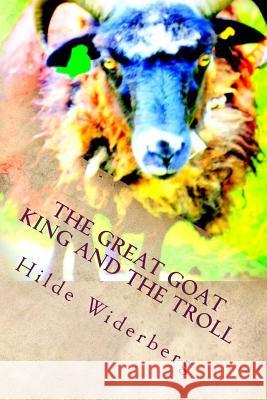The Great Goat King and the Troll » książka
The Great Goat King and the Troll
ISBN-13: 9781495436529 / Angielski / Miękka / 2014 / 26 str.
This is a fairytale about three goats. On their way to their summer fields they met an evil troll. Were I asked, what is a fairytale? I should reply, Read Undine: that is a fairytale ... of all fairytales I know, I think Undine the most beautiful. As Stith Thompson points out, talking animals and the presence of magic seem to be more common to the fairy tale than fairies themselves. However, the mere presence of animals that talk does not make a tale a fairy tale, especially when the animal is clearly a mask on a human face, as in fables. In his essay "On Fairy-Stories," J. R. R. Tolkien agreed with the exclusion of "fairies" from the definition, defining fairy tales as stories about the adventures of men in Faerie, the land of fairies, fairytale princes and princesses, dwarves, elves, and not only other magical species but many other marvels. However, the same essay excludes tales that are often considered fairy tales, citing as an example The Monkey's Heart, which Andrew Lang included in The Lilac Fairy Book. Steven Swann Jones identified the presence of magic as the feature by which fairy tales can be distinguished from other sorts of folktales. Davidson and Chaudri identify "transformation" as the key feature of the genre. From a psychological point of view, Jean Chiriac argued for the necessity of the fantastic in these narratives. In terms of aesthetic values, Italo Calvino cited the fairy tale as a prime example of "quickness" in literature, because of the economy and concision of the tales. Originally, stories that we would now call fairy tales were not marked out as a separate genre. The German term "Marchen" stems from the old German word "Mar," which means story or tale. The word "Marchen" is the diminutive of the word "Mar," therefore it means a "little story." Together with the common beginning "once upon a time" it means a fairy tale or a marchen was originally a little story from long time ago, when the world was still magic. (Indeed one less regular German opening is "In the old times when wishing was still effective.") The English term "fairy tale" stems from the fact that the French contes often included fairies. Roots of the genre come from different oral stories passed down in European cultures. The genre was first marked out by writers of the Renaissance, such as Giovanni Francesco Straparola and Giambattista Basile, and stabilized through the works of later collectors such as Charles Perrault and the Brothers Grimm. In this evolution, the name was coined when the precieuses took up writing literary stories; Madame d'Aulnoy invented the term conte de fee, or fairy tale, in the late 17th century. Before the definition of the genre of fantasy, many works that would now be classified as fantasy were termed "fairy tales," including Tolkien's The Hobbit, George Orwell's Animal Farm, and L. Frank Baum's The Wonderful Wizard of Oz. 21] Indeed, Tolkien's "On Fairy-Stories" includes discussions of world-building and is considered a vital part of fantasy criticism. Although fantasy, particularly the sub-genre of fairytale fantasy, draws heavily on fairy tale motifs, the genres are now regarded as distinct. Literary fairy tales and oral fairy tales freely exchanged plots, motifs, and elements with one another and with the tales of foreign lands. Many 18th-century folklorists attempted to recover the "pure" folktale, uncontaminated by literary versions. Yet while oral fairy tales likely existed for thousands of years before the literary forms, there is no pure folktale, and each literary fairy tale draws on folk traditions, if only in parody. This makes it impossible to trace forms of transmission of a fairy tale. Oral story-tellers have been known to read literary fairy tales to increase their own stock of stories and treatments."
Zawartość książki może nie spełniać oczekiwań – reklamacje nie obejmują treści, która mogła nie być redakcyjnie ani merytorycznie opracowana.











